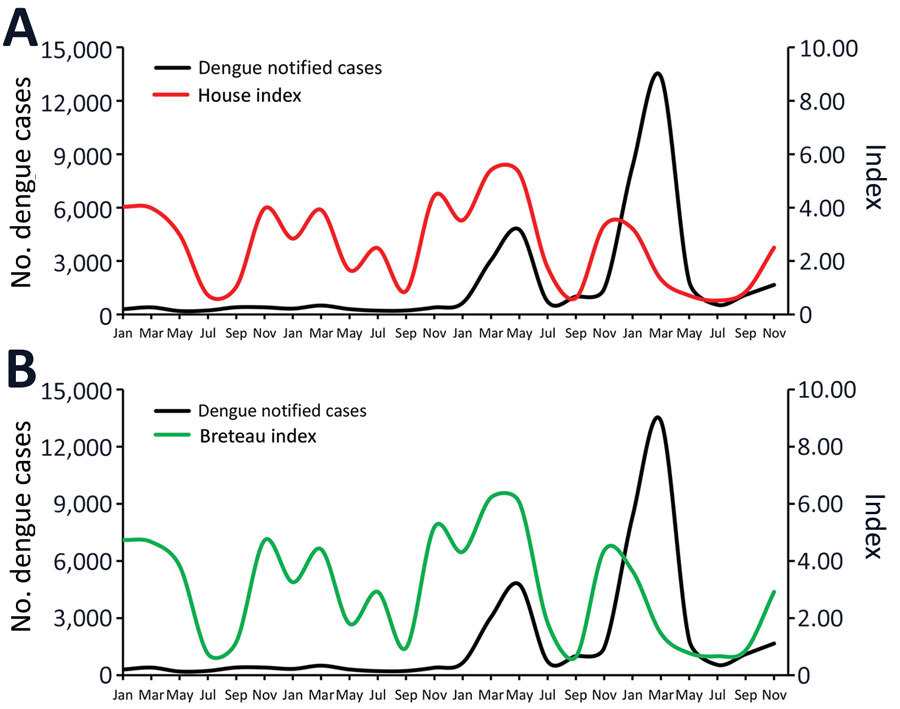Volume 28, Number 4—April 2022
Synopsis
Citywide Integrated Aedes aegypti Mosquito Surveillance as Early Warning System for Arbovirus Transmission, Brazil
Figure 1

Figure 1. Bimonthly variation on traditional Aedes aegypti mosquito infestation indices based on larval surveys compared with number of reported dengue cases, Foz do Iguaçu, Brazil, 2017–2020. A) House index; B) Breteau index.
Page created: February 16, 2022
Page updated: March 19, 2022
Page reviewed: March 19, 2022
The conclusions, findings, and opinions expressed by authors contributing to this journal do not necessarily reflect the official position of the U.S. Department of Health and Human Services, the Public Health Service, the Centers for Disease Control and Prevention, or the authors' affiliated institutions. Use of trade names is for identification only and does not imply endorsement by any of the groups named above.